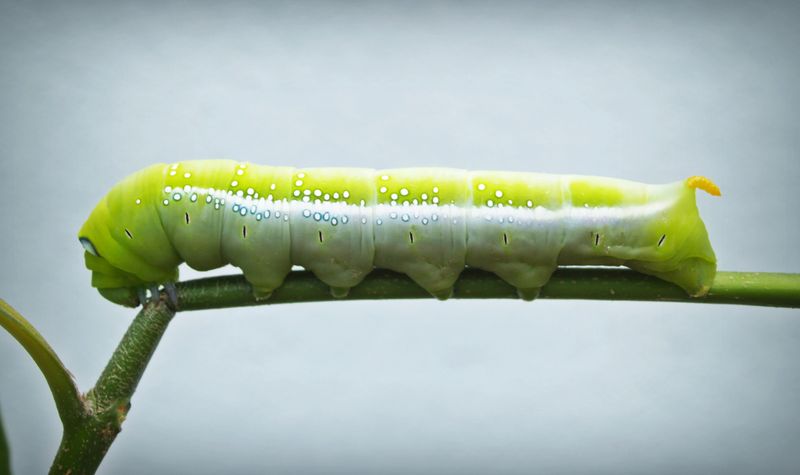A Wriggling Surprise: Neurosurgeon Removes Worm from Patient’s Brain
The Unexpected Discovery
In an astonishing medical case, a neurosurgeon in Australia made an extraordinary discovery while investigating a woman’s mystery symptoms. Surgeon Hari Priya Bandi was performing a biopsy on a 64-year-old patient at Canberra Hospital when she plucked a 3-inch wriggling worm from the patient’s brain. The entire operating team was stunned and felt a sense of unease as the live parasite continued to move with vigor.
The Unveiling of a New Human Parasite
Further investigation revealed that the worm was the larva of an Australian native roundworm, previously unknown to be a human parasite, named Ophidascaris robertsi. These worms are commonly found in carpet pythons, shedding their eggs in snake droppings that are consumed by small mammals. The life cycle of these worms continues as other snakes consume the infected mammals.
A Medical Case Shrouded in Mystery
The 64-year-old woman had been admitted to the hospital due to symptoms of forgetfulness and worsening depression over three months. Scans of her brain showed significant changes, and a year earlier, she had experienced abdominal pain, diarrhea, a dry cough, and night sweats. Initially, the medical team believed she had an immunological condition as the cause, but the brain biopsy revealed the unexpected presence of a wriggling worm.
A Possible Route of Infection
Although the woman had no direct contact with snakes, scientists hypothesize that she might have consumed the worms‘ eggs from contaminated hands or vegetation. The patient lives near a carpet python habitat and frequently forages for warrigal greens, a native vegetation she uses in cooking.
Public Health Implications
This extraordinary case highlights the importance of understanding and monitoring zoonotic infections, particularly in areas where humans and wildlife interact. While it may be rare to find human parasites originating from snakes, this incident serves as a reminder that vigilance in public health practices and awareness of potential risks are crucial.
Editorial: Human-Animal Interactions and Infectious Diseases
Exploring the Connection
The intriguing case of the wriggling worm found in a patient’s brain raises broader questions about our interactions with the natural world and the potential consequences for our health. As humans encroach upon native habitats and engage in activities that expose them to various flora and fauna, the risk of zoonotic infections, where diseases jump from animals to humans, increases.
A Complex Relationship
Australia, known for its unique wildlife, provides a fascinating backdrop for understanding the intricate relationship between humans and animals. Carpet pythons, the natural hosts for Ophidascaris robertsi, play a vital role in maintaining ecological balance. However, as humans move into snake habitats or engage in activities that bring them in close proximity to these creatures, the potential for diseases to cross species barriers becomes a concern.
Protecting Human and Animal Health
While incidents like the one at Canberra Hospital may be rare, they remind us of the importance of responsible interactions with wildlife and the need for effective public health measures. Encouraging individuals to seek medical attention when experiencing unexplained symptoms and improving awareness of zoonotic infections can help prevent potentially life-threatening situations.
Balancing Conservation and Health
Conservation efforts must go hand-in-hand with public health initiatives. Maintaining healthy ecosystems is not only crucial for biodiversity but also acts as a buffer against the emergence of infectious diseases. Strengthening surveillance and research into zoonotic diseases can help mitigate future risks and allow for swift interventions when necessary.
Advice: Precautions and Health Awareness
Understanding the Risks
As humans continue to encroach upon natural habitats and engage in activities that expose them to wildlife, understanding the potential risks becomes essential. Being aware of the presence of zoonotic diseases in certain areas or in relation to specific animal species can help individuals make informed decisions about their interactions with wildlife.
Hygiene Practices
Practicing good hygiene is crucial in minimizing the risks of zoonotic infections. Thoroughly washing hands after handling animals, their droppings, or potentially contaminated vegetation can prevent the ingestion of harmful pathogens.
Seek Medical Attention
If experiencing unexplained symptoms or prolonged health issues, it is important to seek medical attention promptly. Communicating any potential exposures to animals or insects can assist healthcare professionals in making accurate diagnoses and providing appropriate treatment.
Collaboration and Research
Efforts to better understand the dynamics of zoonotic infections require collaboration between medical professionals, researchers, and wildlife conservationists. By sharing knowledge, conducting thorough surveillance, and investing in research, we can gain critical insights into these diseases and develop effective preventive measures.
In conclusion, the discovery of a wriggling worm in a patient’s brain raises both scientific and philosophical questions about our relationship with the natural world. In navigating this complex relationship, recognizing the potential for zoonotic infections, implementing preventive measures, and balancing conservation efforts with public health initiatives are necessary steps toward protecting human and animal well-being.

<< photo by icon0.com >>
The image is for illustrative purposes only and does not depict the actual situation.




